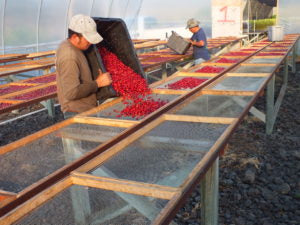Coffee Goes to War
Coffee has been a staple for soldiers for hundreds of years. One of the first recorded instances was in 1683, when the army of the Ottoman Sultan besieged Vienna. On September 11, the Polish cavalry attacked the Sultans’ army and drove them in panic back to Constantinople. The Viennese, who had been starving during the siege, ransacked the supplies left behind by the soldiers. One of the things they found were 500 bags of green coffee beans. They didn’t know what they were, so they began to use them for firewood. However, one wily entrepreneur knew what they were and made a deal with the emperor for all of them. He then opened the first European coffee house and named it, The Blue Bottle.
Revolutionary War
Coffee was not as popular with soldiers during the American Revolutionary War as it is today, for two reasons: 1) the soldiers were more used to tea and coffee was expensive, and 2) they were given a daily allotment of gin, brandy or rum, which was more interesting. However, during the revolution, drinking tea was considered unpatriotic,so coffee slowly became more popular.. John Adams is quoted as saying it was his patriotic duty to learn to drink coffee instead of tea.
A major boost to drinking coffee in the Army occurred in 1832, when Andrew Jackson substituted coffee for rum and brandy in soldiers’ rations. The US Navy held out until 1914, when it banned the serving of alcohol on ships.
Civil War
During the civil war, each Union soldier was given 36 pounds of coffee a year. The Sharps Rifle Company capitalized on the Union soldiers need for coffee by incorporating hand cranked coffee grinders in the butt of its rifles. Union General Benjamin Butler ordered his men to carry coffee in their canteens. He told his fellow Union generals that: “If your men get their coffee early in the morning, you can hold.”
Southern soldiers didn’t do as well because the Union blockaded all their ports and stopped coffee shipments. One thing the South did have, and the North didn’t was tobacco. Southern and Northern soldiers would meet clandestinely between battles to exchange tobacco for coffee. The South also responded by creating coffee substitutes like roasted rye, rice, sweet potatoes, or beets.
First World War
When the United States entered WWI, the army sent roasted coffee from the States. The Army recipe for brewed coffee was 5 ounces of ground coffee per gallon of water for the first brew. For the second and after brews 3 more ounces of water were added to the left-over grounds from the previous brew.
In 1910, George Washington (not that one, he was dead, another one) first successfully mass-produced instant coffee and established the G. Washington Coffee Refining Company in Brooklyn, New York. The Army quickly realized the benefits of instant coffee and it started buying up instant coffee as fast as it could be produced.
Today
After WWI, soldiers received regular rations of instant coffee along with their K rations or MRE’s. The result was a huge explosion, after the war, in consumers drinking instant coffee. Today, the second most popular coffee in the world is Nescafe.
For soldiers not on the front lines, there are numerous coffee options on military bases today including S&D, Sara Lee, Maxwell House, Nescafé, Dunkin Donuts and Monster Java. Starbucks has numerous cafes on military bases. The Navy even provides coffee bars on some of its larger ships. It is rumored that Starbucks marketing department has focused on front line soldiers as a new source of business and is developing an armored mobile café to provide flavored coffee drinks to front line troops.

